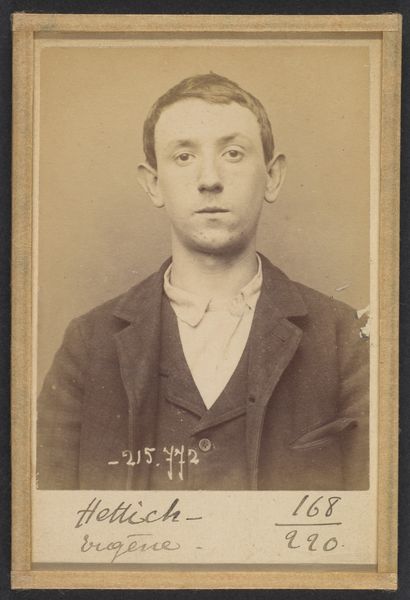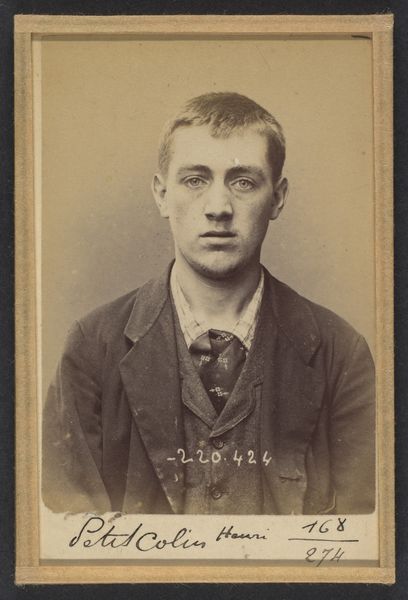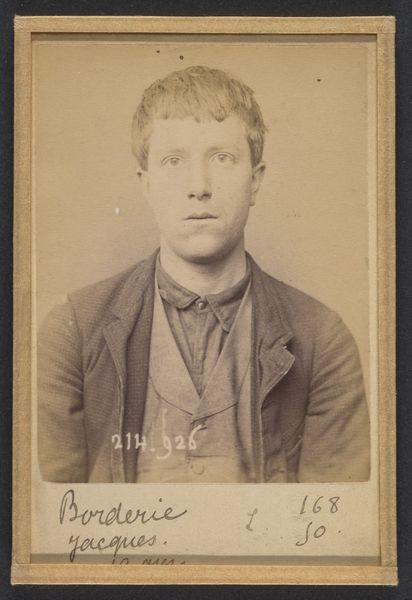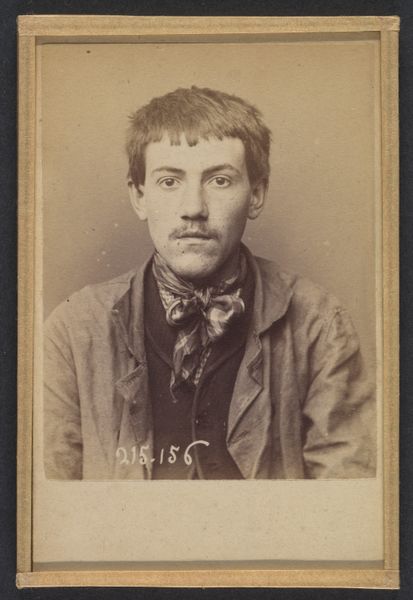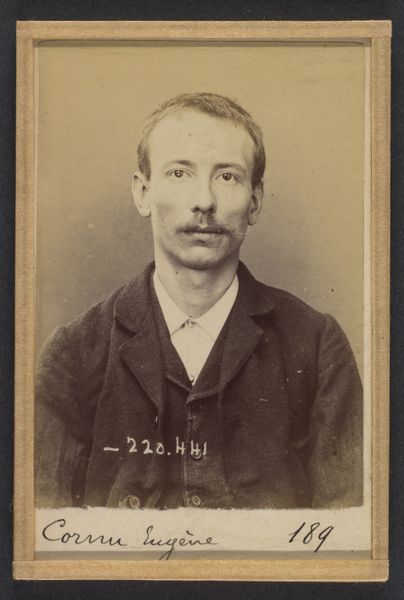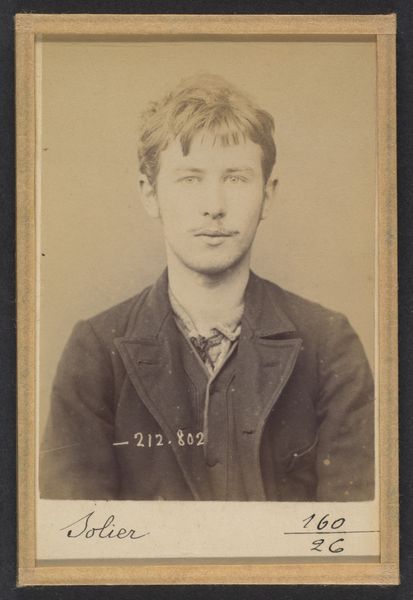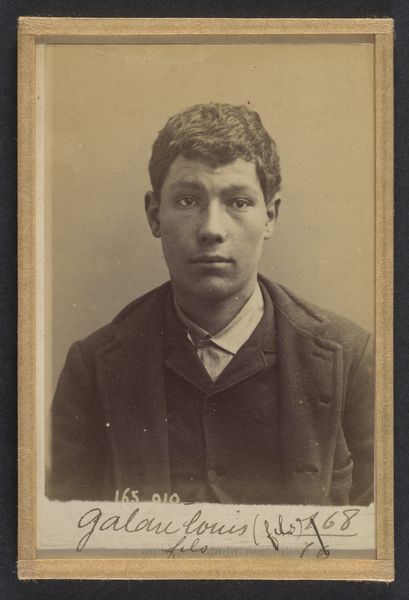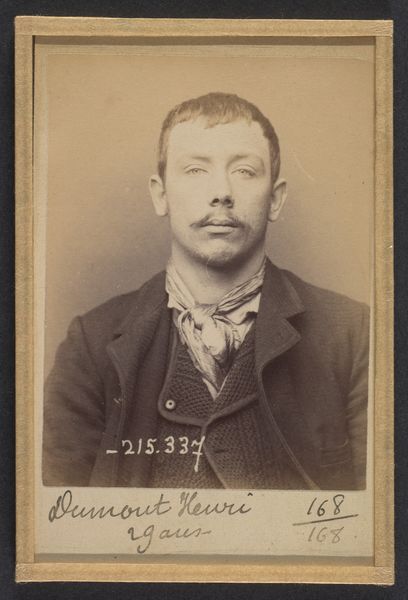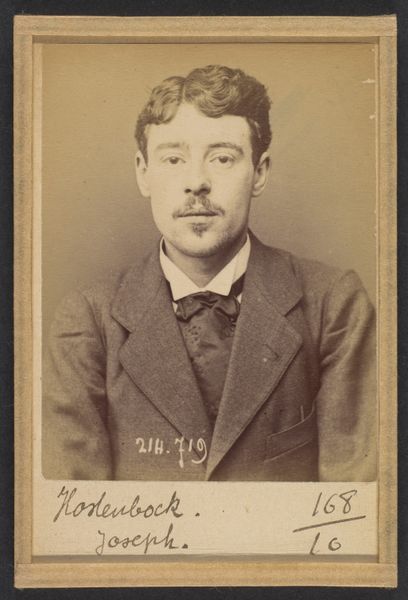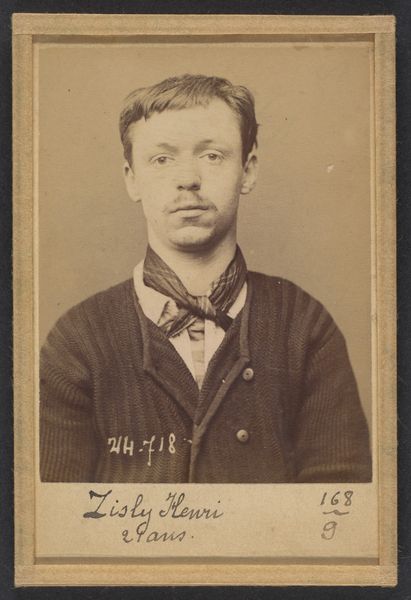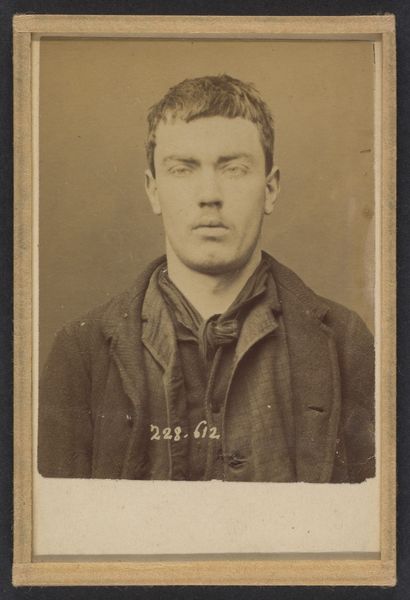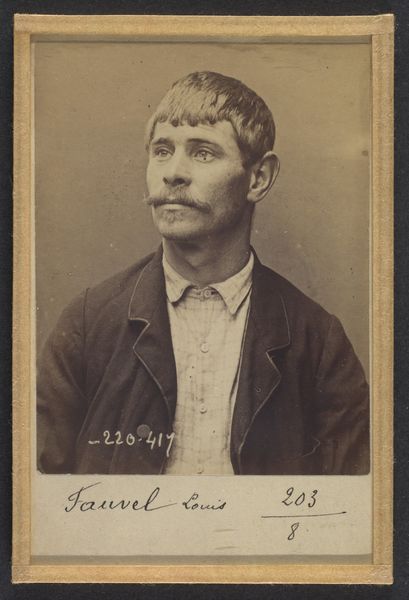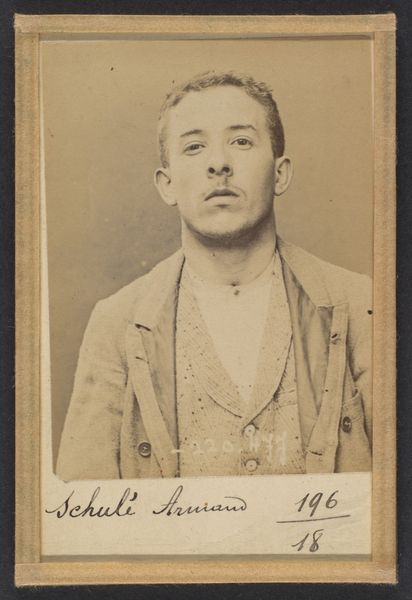
Godard. Armand, Alexandre. 18 ans, né le 11/3/75 à Paris XVIIe. Électricien. Cris séditieux. 6/1/94. 1894
0:00
0:00
photography, gelatin-silver-print
#
portrait
#
16_19th-century
#
portrait
#
photography
#
historical photography
#
gelatin-silver-print
#
history-painting
#
realism
Dimensions: 10.5 x 7 x 0.5 cm (4 1/8 x 2 3/4 x 3/16 in.) each
Copyright: Public Domain
Curator: This gelatin-silver print, titled "Godard. Armand, Alexandre. 18 ans, né le 11/3/75 à Paris XVIIe. Électricien. Cris séditieux. 6/1/94," was produced in 1894. Editor: Even without knowing its background, I’m immediately struck by the intense, almost haunting gaze of the subject. The limited tonal range of the silver print adds a timeless quality. Curator: Indeed. The artist, Alphonse Bertillon, pioneered forensic photography. These portraits, while seemingly straightforward, played a critical role in developing methods of criminal identification in late 19th-century Paris. Editor: The starkness emphasizes his individuality even as he’s subjected to systematic cataloging. Notice how the flat lighting removes all romanticism. The frontal pose is so devoid of expression. Curator: That's right. The subject, identified as Armand Alexandre Godard, an 18-year-old electrician, was presumably arrested for seditious cries. This work reveals how photography was becoming an instrument of social control. Editor: And in this application, it’s truly detached. There's an attempt at scientific objectivity. It seems almost cruel but incredibly powerful in its intent, though. The markings on the photograph – the numbers, the name – serve as labels, stripping the man of his humanity, reducing him to data. Curator: These photographic methods and classification systems speak volumes about the fears and anxieties around crime, immigration, and the social order of the time. Editor: It becomes something more significant through Bertillon's method, achieving, against the odds, real presence and impact by denying artistic intention. Curator: Bertillon created these photographs for functional reasons. That speaks powerfully about our assumptions of photography as an aesthetic medium and a method for the state control and social order. Editor: It certainly pushes one to contemplate the diverse functions inherent within portraiture as both documentation and artifice.
Comments
No comments
Be the first to comment and join the conversation on the ultimate creative platform.
